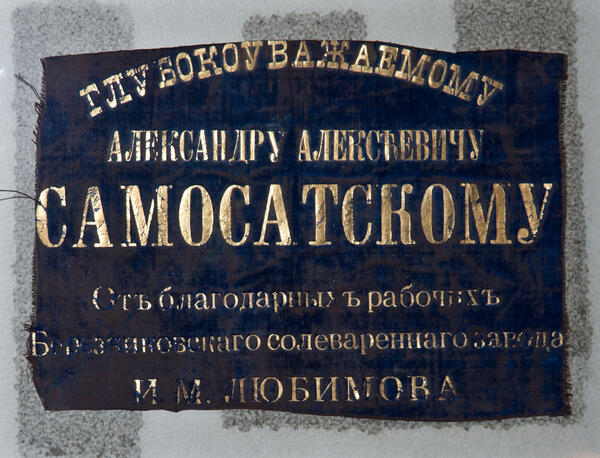Alexander Samosatsky was a Russian chemical engineer, head of the construction of the Bereznikovsky soda plant. Born in Kazan in 1845 in the family of a priest, graduated from the Physics and Mathematics Faculty of Kazan University. In 1869 he received the degree of candidate of natural sciences.
After several years of working at the University, SamosAtsky came to Perm at the invitation of the industrialist and businessman Ivan Lyubimov. The task of the engineer was to inspect the salt factories of the Perm province and create a new one in the town of BereznikI, SolikAmsk district.
Having studied the works by similar European factories in Germany and Austria, SamosAtsky started constructing a salt plant in BereznikI. He launched the first two brews already in 1873, and then began the construction of the second soda plant.
In 1883, Samosatsky wrote: ‘After a considerable number of failures, in 10 years I managed to achieve an output of up to 1,500 thousand poods of soda ash and up to 500 thousand poods of caustic soda.’
Until 1906, Alexander SamosAtsky managed the salt and soda factories in Berezniki. Judging by the reviews of his contemporaries, he was loved and respected by workers and colleagues. He did a lot of useful things as a representative of the municipality: he opened a school for the children of workers at the Berezniki soda plant, under the trusteeship of his wife VarvAra SamosAtskaya, helped improve working conditions and increase the wages of artisans.
Alexander Samosatsky’s merits were recognized by the words written by the workers on the occasion of his retirement in 1906: “Let me express gratitude from the artisans of the soda factory for your long and impeccable service and for your polite and at the same time attentive attitude towards the workers. You, with all your diligence, knew how to fairly resolve and remove obstacles… you have earned the worthy attention of the workers and good wishes for you in your current life for charitable activities towards the workers and for the quiet continuation of your old years…”.
BereznikI Salt Factory existed until the early 1930s, having produced millions of poods (sixteen kilograms) of high-quality edible salt during that time.
After several years of working at the University, SamosAtsky came to Perm at the invitation of the industrialist and businessman Ivan Lyubimov. The task of the engineer was to inspect the salt factories of the Perm province and create a new one in the town of BereznikI, SolikAmsk district.
Having studied the works by similar European factories in Germany and Austria, SamosAtsky started constructing a salt plant in BereznikI. He launched the first two brews already in 1873, and then began the construction of the second soda plant.
In 1883, Samosatsky wrote: ‘After a considerable number of failures, in 10 years I managed to achieve an output of up to 1,500 thousand poods of soda ash and up to 500 thousand poods of caustic soda.’
Until 1906, Alexander SamosAtsky managed the salt and soda factories in Berezniki. Judging by the reviews of his contemporaries, he was loved and respected by workers and colleagues. He did a lot of useful things as a representative of the municipality: he opened a school for the children of workers at the Berezniki soda plant, under the trusteeship of his wife VarvAra SamosAtskaya, helped improve working conditions and increase the wages of artisans.
Alexander Samosatsky’s merits were recognized by the words written by the workers on the occasion of his retirement in 1906: “Let me express gratitude from the artisans of the soda factory for your long and impeccable service and for your polite and at the same time attentive attitude towards the workers. You, with all your diligence, knew how to fairly resolve and remove obstacles… you have earned the worthy attention of the workers and good wishes for you in your current life for charitable activities towards the workers and for the quiet continuation of your old years…”.
BereznikI Salt Factory existed until the early 1930s, having produced millions of poods (sixteen kilograms) of high-quality edible salt during that time.



